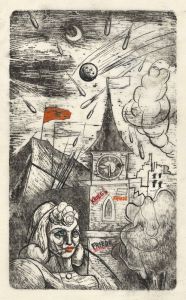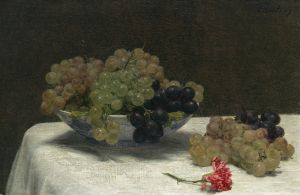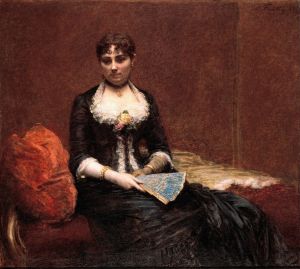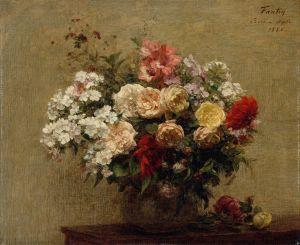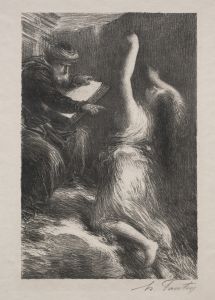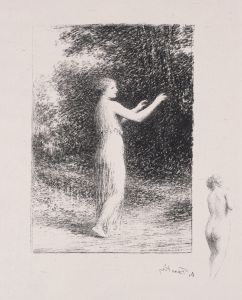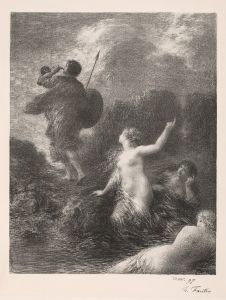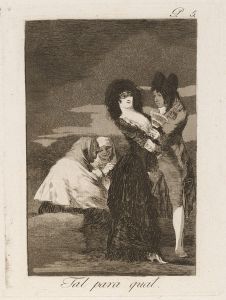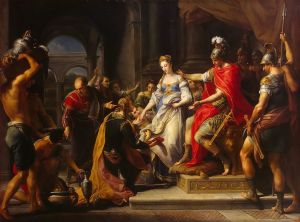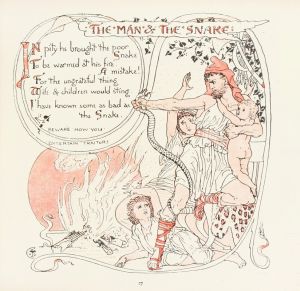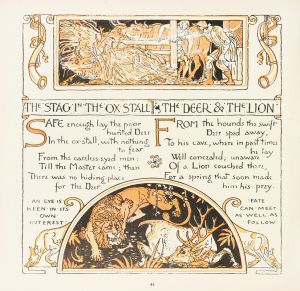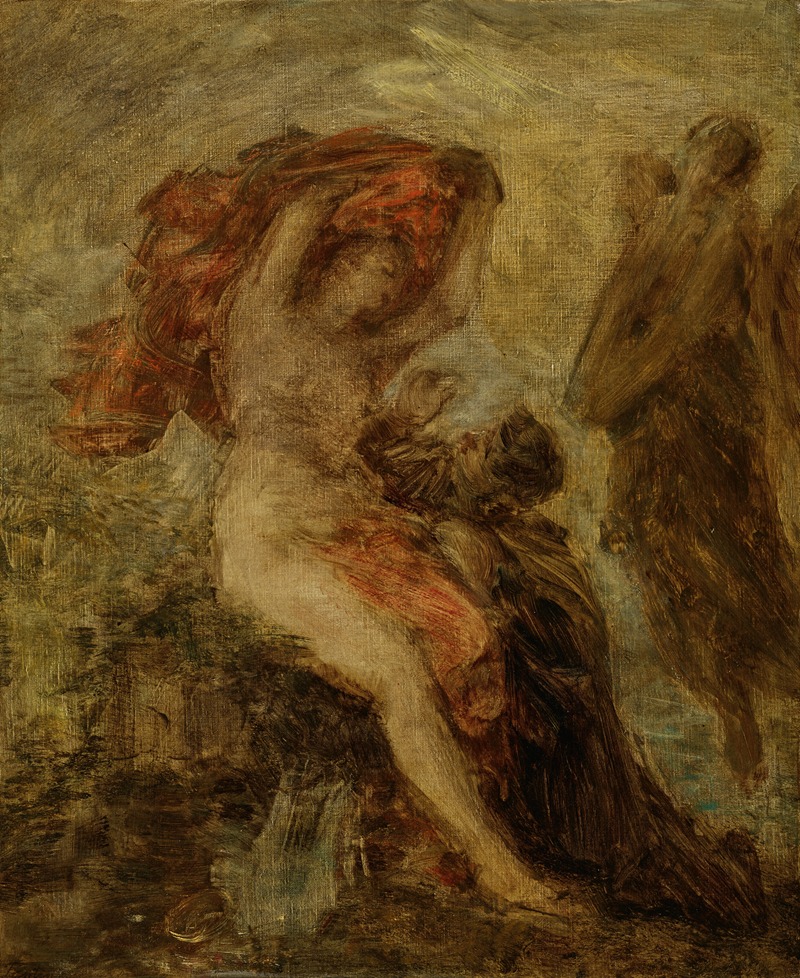
L’Homme entre le Vice et la Vertu
A hand-painted replica of Henri Fantin-Latour’s masterpiece L’Homme entre le Vice et la Vertu, meticulously crafted by professional artists to capture the true essence of the original. Each piece is created with museum-quality canvas and rare mineral pigments, carefully painted by experienced artists with delicate brushstrokes and rich, layered colors to perfectly recreate the texture of the original artwork. Unlike machine-printed reproductions, this hand-painted version brings the painting to life, infused with the artist’s emotions and skill in every stroke. Whether for personal collection or home decoration, it instantly elevates the artistic atmosphere of any space.
Henri Fantin-Latour, a renowned French painter and lithographer, is celebrated for his exquisite still lifes and group portraits. Among his diverse body of work is the painting "L’Homme entre le Vice et la Vertu" (translated as "Man between Vice and Virtue"). This painting is a notable example of Fantin-Latour's exploration of allegorical themes, a departure from his more commonly known still lifes and portraits.
"L’Homme entre le Vice et la Vertu" was created during a period when Fantin-Latour was increasingly interested in symbolist themes, which was a movement that sought to express ideas and emotions through symbolic imagery. This painting reflects the artist's engagement with moral and philosophical questions, a theme that was prevalent in the art and literature of the late 19th century.
The composition of the painting presents a central male figure flanked by two allegorical female figures, representing Vice and Virtue. This triadic arrangement is a classical motif, often used to depict the moral choices faced by humanity. The male figure, caught between these two opposing forces, symbolizes the eternal human struggle between good and evil, a theme that resonates with the moral and ethical dilemmas explored in literature and art of the time.
Fantin-Latour's technique in this painting is characteristic of his style, with a focus on meticulous detail and a subtle use of color. The figures are rendered with a delicate realism, and the interplay of light and shadow adds depth to the composition. The artist's skillful use of chiaroscuro enhances the dramatic tension between the figures, emphasizing the moral conflict at the heart of the painting.
While Fantin-Latour is primarily known for his still lifes and portraits, "L’Homme entre le Vice et la Vertu" demonstrates his versatility and his ability to engage with complex allegorical subjects. This painting is part of a broader trend in his work during this period, where he explored themes of mythology, allegory, and the human condition.
The painting is also reflective of the broader cultural and intellectual currents of the time. The late 19th century was a period of significant social and philosophical change, with artists and writers grappling with questions of morality, identity, and the nature of human existence. Fantin-Latour's work, including "L’Homme entre le Vice et la Vertu," can be seen as part of this larger dialogue, contributing to the rich tapestry of ideas that characterized the era.
Despite its thematic depth, "L’Homme entre le Vice et la Vertu" is not as widely known as some of Fantin-Latour's other works. However, it remains an important piece within his oeuvre, offering insight into his artistic development and the intellectual milieu of his time. The painting is a testament to Fantin-Latour's ability to transcend the boundaries of genre, creating works that are both visually compelling and intellectually engaging.
In summary, "L’Homme entre le Vice et la Vertu" by Henri Fantin-Latour is a significant work that exemplifies the artist's engagement with allegorical themes and his mastery of painting techniques. It reflects the moral and philosophical concerns of the late 19th century and stands as a testament to Fantin-Latour's artistic versatility and intellectual curiosity.





